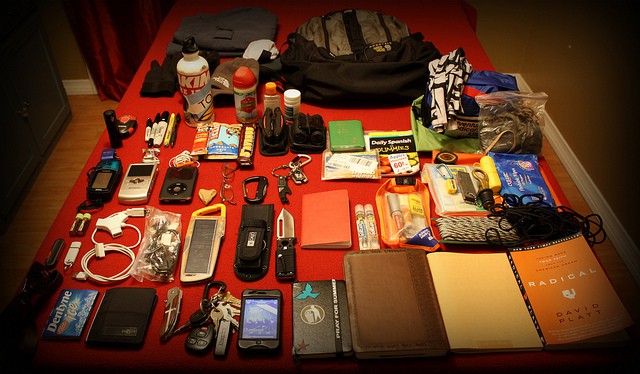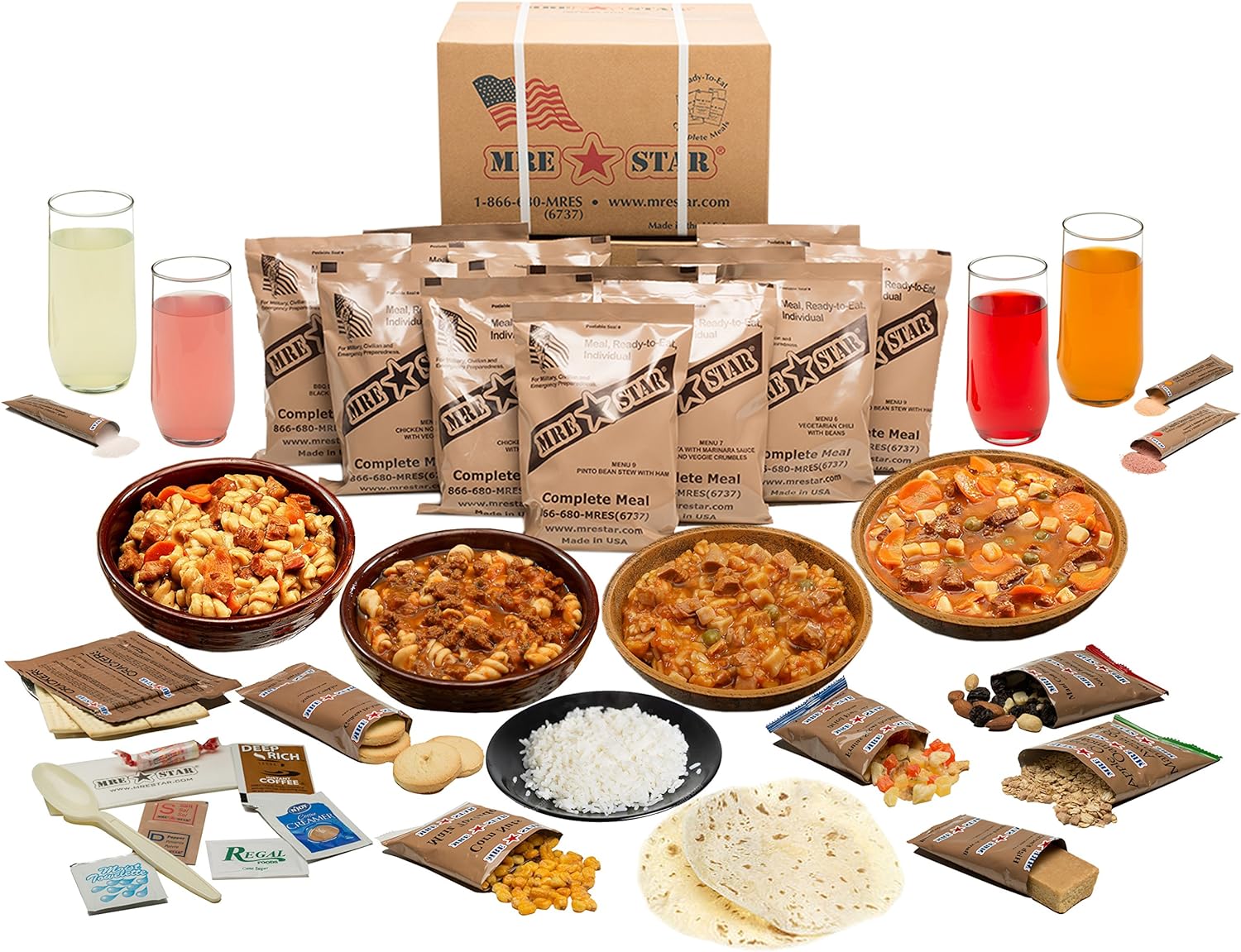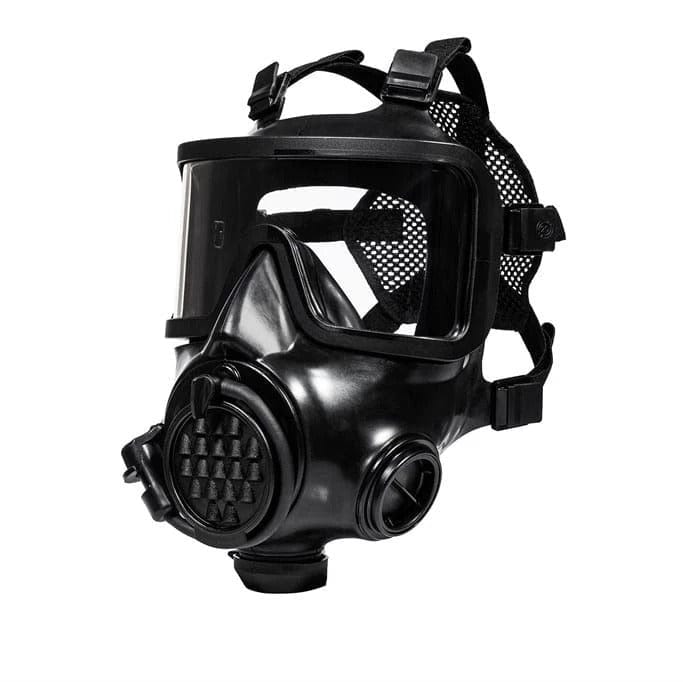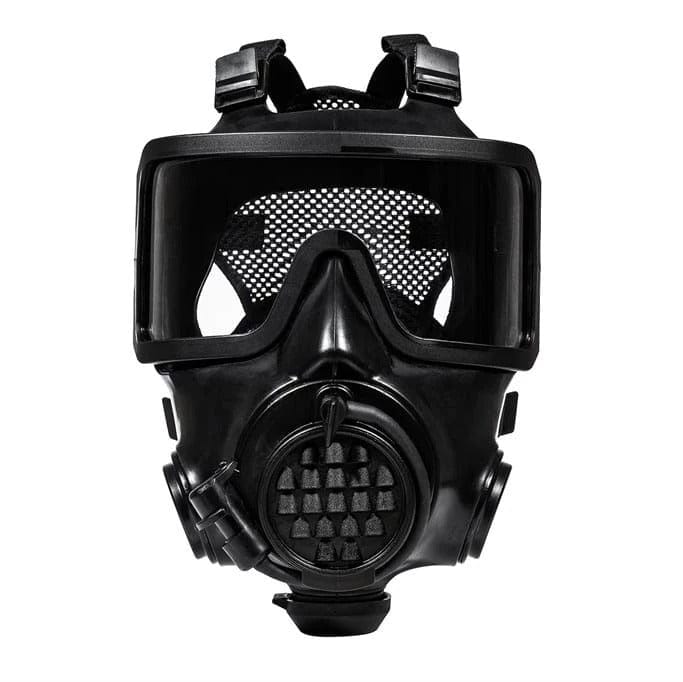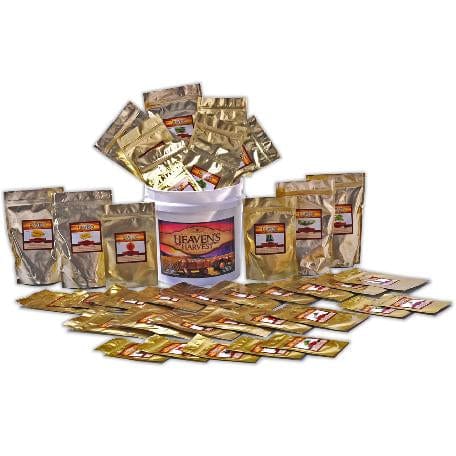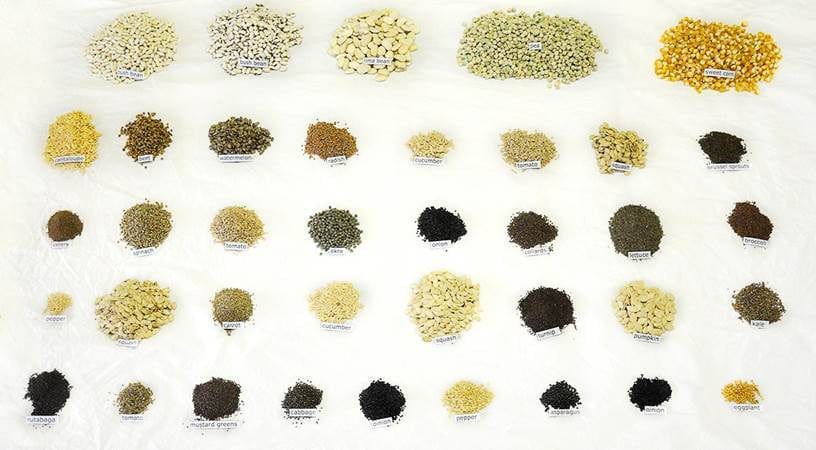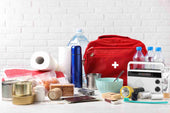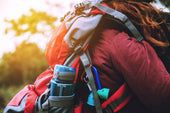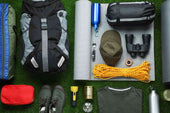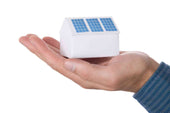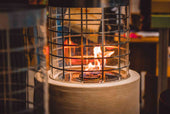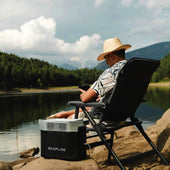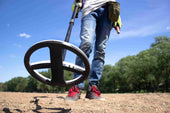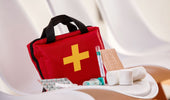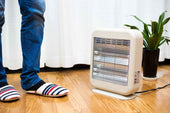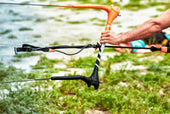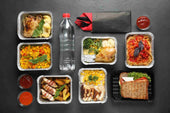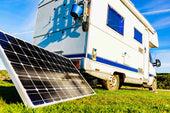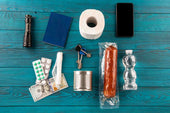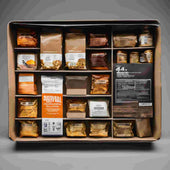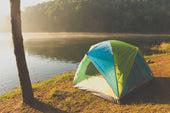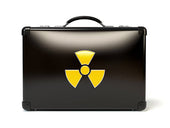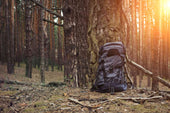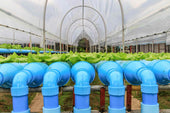Survival isn’t just about having the right equipment or copying what is seen on survival TV shows. It involves the practical ability and skills to deal with and manage the effects of natural disasters, accidents, or emergencies in a practical way with preparedness, skills, and knowledge.
Learning practical survival skills can be lifesaving, offering benefits beyond the thrill of outdoor adventures. Survival is an art, a mindset, and, most importantly, a means of remaining alive and improving any given circumstance.

Understanding Survival
- Survival as an Art: It's about creatively using your environment and resources to stay alive.
- Survival as a Mindset: The psychological readiness to face and overcome challenges is as crucial as physical preparedness.
- Practical Skills: Knowing how to secure fire, food, water, and shelter is fundamental.
The Importance of Being Prepared
"Better be always prepared" could sound cliché, but it proves the survival rule. Preparation is the key to preventing loss and dealing with natural disasters, weather changes, road accidents, and other unpredictable events.
Basic survival skills and essential gear can make a significant difference.
The Top 17 Cool Survival Gadgets and Tools That Can Save Your Life
Let's dive into a curated list of the top 17 survival gear products that can be invaluable in emergencies. These items prioritize fire, food, water, self-defense, security, stealth, and shelter-building tools.
1. SOG Professional Multi-Tool Gear
SOG Professional Multi-Tool Gear is designed for versatility and reliability, meeting the harsh requirements of people in advanced outdoor settings, professionals, and everyday users. Its solid build and many versatile tools can take on any job, making it the ultimate tool for adventure or any challenge.

Key Features
- Comprehensive Tool Selection: This kit includes pliers, wire cutters, knives, screwdrivers, and more, all designed for durability and efficiency.
- One-Handed Opening: Features tools that can be accessed and used single-handedly, enhancing ease of use and quick response in critical situations.
- Heavy-Duty Construction: Built to withstand harsh conditions, ensuring reliability and long service life even with rigorous use.
Practical Scenarios
- Outdoor Adventures are perfect for setting up camp, making repairs on the go, or preparing kindling for a fire.
- Emergency Repairs: Handy for quick fixes to gear, vehicles, or equipment when away from traditional tools or help.
- Daily Tasks and DIY Projects: Versatile enough for home improvement tasks, electronics repairs, or as a go-to gadget for everyday problems.
The SOG Professional Multi-Tool Gear is a multipurpose powerhouse. It can help with everything from common tasks to the most unusual situations, ensuring you are always ready.
2. Ultimate Outdoor Survival Kit: 125pcs in One Pack
The Ultimate Outdoor Survival Kit: This 125-piece Pack is the best tool and supply for outdoor survival. The precise collection of resources addresses several types of emergencies and activities.
This mini kit conveniently includes everything from the necessities to advanced equipment for unexpected situations that almost any adventurer, hiker, or survival enthusiast would encounter.
Key Features
- Extensive Assortment: Includes various tools such as knives, fire starters, tactical pens, emergency blankets, and water purification tablets, among others.
- Compact and Organized: All 125 pieces are efficiently packed in a durable, easy-to-carry case that keeps items organized and accessible.
- Versatility for Various Situations: Designed to support survival needs across environments, from wilderness survival to urban emergency scenarios.
Practical Scenarios
- Wilderness Expeditions: Equipped with tools for navigation, shelter building, and fire starting, ensuring safety and comfort in remote areas.
- Emergency Preparedness: This item is ideal for keeping in a vehicle or home to address immediate needs during natural disasters or power outages.
- Adventure Sports: Supports a range of outdoor sports and activities with specific tools for fishing, hiking, and camping, enhancing the overall outdoor experience.
The Ultimate Outdoor Survival Kit: 125pcs in One Package is not just a kit but a complete solution for safety and survival, satisfying outdoor adventurers and preparedness enthusiasts.
3. Emergency Auto Escape Multi-Tool
The Lifesaving Emergency Auto Escape Multi-Tool is a device that helps drivers and passengers exit the vehicle in seconds during an emergency. Compact yet powerful, this small device does many rescue tasks in one user's ideal gadget that can be kept within easy reach in any car.

Key Features
- Window Breaker: A hardened steel point allows for quick breaking of side windows, facilitating an escape route.
- Seatbelt Cutter: This tool, safely integrated to prevent injury, slices through seatbelts with minimal effort, enabling fast evacuation.
- Compact Design: It is small enough to fit in a glove compartment or attach to a keychain, ensuring it is always accessible when needed.
Practical Scenarios
- Vehicle Submersion: Break side windows to escape from a sinking car, avoiding a water pressure trap.
- Post-Accident Escape: Cut through jammed seatbelts and break windows if doors cannot be opened after a collision.
- Rescuing Others: Quickly assist in evacuating passengers from another vehicle involved in an accident.
The Emergency Auto Escape Multi-Tool is a critical safety device for every vehicle. It comforts vehicle occupants by maximizing their chances of survival in desperate situations.
4. Wise Company 5-Day Survival Backpack
The Wise Company Survival Backpack is assembled with the utmost precision to ensure an individual has all the necessary items to survive for five days in any emergency. This all-in-one kit offers food, warmth, and medical supplies, making it the ultimate disaster preparedness and outdoor adventure tool.
Key Features
- Food and Water Supplies: Contains 32 servings of gourmet entrees, including breakfast, lunch, and dinner meals, as well as water pouches.
- Survival Tools: Equipped with a portable stove, stainless steel cup, waterproof matches, and a multifunctional tool and flashlight.
- First Aid and Hygiene Kit: This kit includes a basic kit for minor injuries and hygiene products to maintain cleanliness and prevent infection.
Practical Scenarios
- Natural Disasters: It is essential to quickly evacuate during hurricanes, floods, and earthquakes, as food and water sources may be disrupted.
- Outdoor Expeditions are ideal for multi-day hiking, camping, or hunting trips. They provide sustenance and essential survival tools in remote locations.
- Emergency Preparedness: A ready-to-go solution for home, office, or car, ensuring you're prepared for unexpected emergencies or power outages.
Through Wise Company’s 5-Day Survival Backpack, you can know that you will be adequately equipped to handle the critical first 5 days of any emergency.
5. Antarctica Emergency Survival Gear Kits 60 In 1
The Antarctica Emergency Survival Gear Kits 60 In 1 are a complete assortment of tools and accessories assembled to help you survive during extreme conditions and emergencies. Intended for adventurers, survivalists, and those who need to be prepared for the unexpected, the kit incorporates versatility and reliability in one small package.
Key Features
- A Wide Range of Tools includes essentials such as a tactical knife, flashlight, fire starter, and emergency blanket.
- Compact and Portable: All 60 items are efficiently organized in a durable, lightweight bag for easy carrying and storage.
- Versatile Use: Suitable for various survival situations, from wilderness adventures to urban emergencies.
Practical Scenarios
- Wilderness Survival: Navigate, signal for help, and maintain warmth during unexpected overnight stays in the backcountry.
- Urban Emergencies: Utilize tools for self-defense, breaking glass in case of entrapment, and illuminating dark areas during power outages.
- Disaster Preparedness: A go-to kit for earthquake, hurricane, or flood situations, offering critical survival tools and first aid essentials.
The Antarctica Survival Gear Kits 60 In 1 guarantees you are well-prepared for various survival-related issues. It is a necessary element of any disaster preparedness plan or survivor kit.
6. FireKnife Survival Knife
The FireKnife's combined design combines the durability of the Mora of Sweden blade with the creativity of the FireSteel into one crucial survival tool. Its dual-purpose design caters to the critical needs of outdoor enthusiasts: the ability to cut small objects precisely and start a fire in challenging situations.

Compact and Essential FireKnife
- Dual-Purpose Design: A unique tool featuring a durable blade by Mora of Sweden for cutting tasks and an integrated Swedish FireSteel for fire-starting.
- Material and Durability: The stainless steel blade ensures longevity and resistance to environmental factors, and the handle is ergonomic for comfort and grip.
Key Features
- Versatile Blade: Ideal for food preparation, wood carving, and other survival tasks.
- Integrated FireSteel: Produces sparks at 3000°C, enabling fire to start in any condition, including wet and cold environments.
Practical Applications
- Fire Starting in Wet Conditions: Generate sparks to ignite kindling, ensuring warmth and cooking capability.
- Emergency Shelter Construction: The blade precisely cuts through branches and vines, which is essential for quickly setting up a shelter.
- Food Preparation: Sharp Edge efficiently prepares caught fish or other food sources.
The FireKnife's blend of cutting precision and fire-starting efficiency makes it an indispensable tool for outdoor adventurers and survival situations. Its reliability ensures preparedness, offering both protection and sustenance in the wilderness.
7. The First 24 Survival Kit
Taurus created the First 24 Survival Kit, a fully inclusive emergency response pack that contains fundamental survival instruments for the first 24 hours of a crisis.
This kit is a self-defense tool and a collection of basic survival gear designed for the survivalist who may expect a range of scenarios, from natural disasters to spontaneous wilderness trips.
Key Features
- Taurus Judge Firearm: Customized for versatility, capable of firing .45 Colt cartridges and .410 bore shotshells, providing significant defensive capability.
- Sting Survival Blade: A compact, three-inch carbon steel knife, perfect for precision cutting in survival situations.
- Six-inch LED Flashlight and Adhesive Emergency Lights: These offer reliable lighting solutions for navigation and signaling in low-visibility conditions.
- Fire-Starting Kit: This kit contains the essentials for starting a fire in wet or windy conditions, which is crucial for warmth and food preparation.
- Spherical Compass and Paracord: These enable accurate navigation through unfamiliar terrain and are versatile for use in shelter building or emergency repairs.
- Batteries: Powers the flashlight and emergency lights, ensuring illumination is always available.
Practical Scenarios
- Self-Defense in the Wild: Utilizing the Taurus Judge, you can protect yourself against wild animals or threats, firing with precision and reliability.
- Emergency Shelter Construction: The Sting survival blade and paracord allow you to quickly cut branches and secure materials to construct a makeshift shelter against harsh weather.
- Nighttime Navigation: The combination of the spherical compass for direction and the six-inch LED flashlight for visibility enables safe navigation through dense forests or rough terrain at night, avoiding disorientation and potential hazards.
Having the First 24 Survival Kit will give you the tools to tackle the critical hours of the first day in any emergency. It combines self-defense and survival strategies with essential utility to ensure that you are prepared and able to overcome whatever adversities come your way.
8. BioLite Camp Stove
The BioLite CampStove is an economical solution. It provides the functionalities of a portable stove and can charge electronic devices using only renewable biomass fuel. Great for emergencies and outdoor activities, this stove is always a must-have, whether dealing with power outages or camping in the wild.

Key Features
- Renewable Fuel Source: This fuel source utilizes easily accessible biomass, such as twigs, pine cones, and leaves, eliminating the need for petroleum-based fuels.
- Integrated USB Charger: Features a built-in USB plug to charge phones and other 5V gadgets while cooking or boiling water.
- Compact and Lightweight: The design allows easy transport. It packs down to 8.25 x 5 inches and weighs just 2 lbs, making it ideal for emergency kits and camping gear.
Practical Scenarios
- Emergency Power Outages: Use the CampStove to boil water and cook meals during a power outage while keeping your phone charged for emergency communication.
- Sustainable Camping: Leave no trace by utilizing available biomass around your campsite for cooking, avoiding using fossil fuels, and reducing your carbon footprint.
- Disaster Preparedness: In the aftermath of a natural disaster when resources are scarce, this CampStove provides a means to purify water and prepare food, using debris as a fuel source.
The BioLite CampStove offers a unique blend of practicality and sustainability, ensuring you remain prepared and self-sufficient in everyday outdoor activities and unexpected emergencies.
9. Blue Freedom
Blue Freedom sets a new standard in renewable energy. It uses a time-tested, compact hydroelectricity principle that is now available in portable form. This mini-hydropower generator is great for adventurers and survivalists, as it uses running water to charge essential devices even in the most remote places.
Key Features
- Portable Hydropower Generator: A small, disc-shaped device with a fan-based turbine for generating electricity from water flow.
- Efficient Energy Storage: Capable of storing generated electricity in batteries and capacitors for later use, ensuring a reliable power source.
- USB Charging Capability: Its USB port allows it to charge smartphones, MP3 players, GPS units, and other small electronic devices.
- Eco-Friendly and Sustainable: Utilizes renewable energy sources without the need for fossil fuels, offering an environmentally friendly alternative for outdoor power needs.
Practical Scenarios
- Backcountry Camping: Keep your gadgets charged during extended stays in the wilderness by placing Blue Freedom in a nearby stream or river.
- Emergency Preparedness: In disaster scenarios where traditional power sources are unavailable, Blue Freedom can provide critical power for communication devices and small medical equipment.
- Eco-Conscious Traveling: For those seeking to minimize their carbon footprint while traveling, Blue Freedom offers a sustainable way to power devices without relying on conventional charging methods.
Blue Freedom presents a revolutionary approach to portable power, combining sustainability with practicality for outdoor enthusiasts, emergency kits, and eco-conscious individuals.
10. LifeStraw Personal Water Filter
The LifeStraw Personal Water Filter is an innovation that provides access to clean and safe drinking water in any difficult situation, from camping in remote areas to emergencies. This invention won TIME Magazine’s Invention of the Year award. It provides a more practical solution to obtaining clean water directly from natural sources without the danger of waterborne diseases.

Key Features
- Microbiological Purification Filter: Removes 99.9999% of waterborne bacteria and 99.9% of protozoan parasites without chemicals, iodine, or batteries.
- Lightweight and Portable: Weighing just 2 ounces, LifeStraw is ideal for hikers, campers, and emergency preparedness kits.
- Wide Accessibility: It is affordable to ensure it's available for both avid outdoors people and those in need in developing countries.
- Award-Winning Design: Recognized for its innovation and effectiveness in providing safe drinking water.
Practical Scenarios
- Hiking and Camping: You can drink safely from streams or lakes without carrying heavy water supplies or worrying about running out of water.
- Emergency Preparedness: An essential part of any emergency kit, providing access to clean water after natural disasters disrupt local water supplies.
- International Travel: Use LifeStraw to drink water safely in countries with questionable water quality, reducing the risk of illness.
LifeStraw's ability to provide immediate access to clean water in a compact and easy-to-use format makes it an invaluable tool for outdoor adventurers, travelers, and emergency responders.
11. Cammenga Model 27CS Lensatic Compass
The Cammenga Model 27CS Lensatic Compass is a proven, rugged navigational gadget perfect for outdoor adventurers and survivalists who prefer accuracy and dependability. It is engineered to withstand the roughest environments and is a compass you can rely on to navigate any environment accurately.
Key Features
- Reliability: Built to military specifications, ensuring accuracy and durability in challenging conditions.
- Polarity Protection: Engineered to maintain its polarity and function correctly even in areas with magnetic interference.
- Essential Survival Skill: Recognized as a critical tool in Special Forces survival training and by outdoor survival schools worldwide.
Practical Scenarios
- Wilderness Exploration: Navigate confidently through dense forests or mountainous terrain, where GPS signals may be unreliable.
- Emergency Situations: If you get lost or disoriented, the compass provides a dependable method for finding your way to safety.
- Adventure Racing: Essential for orienteering and adventure races that require accurate navigation without the aid of electronic devices.
The Cammenga Model 27CS Lensatic Compass is more than just a tool; it is a vital survival gadget for those who venture into the unknown for pleasure, exploration, or survival.
12. SunRocket Sunlight
The SunRocket Sunlight is a solar device that uses sun rays to boil water, providing a clean and energy-efficient alternative that outdoor enthusiasts and survivalists can use. This revolutionary device turns a supposedly impossible task into a practical step-by-step process, providing hot water for different needs without fuel or electricity.

Key Features
- Solar-Powered Water Heating: Utilizes the sun's heat to boil water, requiring no external power source or fuel.
- Versatile Use: It is ideal for cooking, drinking, and sterilizing water, making it a versatile tool for outdoor adventures and emergency kits.
- Cost-Effective: Offers an affordable way to ensure access to hot water in the wilderness or during power outages.
Practical Scenarios
- Camping and Hiking: Boil water to cook meals or make hot beverages during outdoor activities, reducing the need to carry heavy fuel.
- Emergency Preparedness: Sterilize water for drinking or first aid, crucial when traditional water sources are compromised.
- Sustainable Living: Incorporate eco-friendly water heating into daily life, minimizing reliance on electricity or gas.
While not compromising on practicality, the SunRocket Sunlight is an eco-friendly choice for eco-conscious hikers, campers, and others who want to always have hot water on the trail, in emergencies, or who wish to adopt a more eco-friendly lifestyle.
13. Leatherman One-Hand Tool
The Leatherman One-Hand Tool takes the multi-tool concept to a new level by combining versatility with ease of use. Thus, it is a must-have for anybody involved in outdoor activities or who might have been in a survival situation.
It is not just a gadget but essential gear for any adventurer. Its one-handed deployment feature and ability to identify the tools make it a must-have for anyone on adventures.
Key Features
- One-Handed Deployment: This feature enables the user to access all 16 features with one hand, enhancing ease of use in critical situations.
- Identifiable Tools: Each tool is marked with imprints on the handle for quick identification, saving time and hassle.
- Compact Versatility: Offers 16 different tools in one compact design, saving space and weight in your pack.
Practical Scenarios
- Camping Setup and Repairs: You can quickly set up camp or make necessary repairs to gear and equipment without rummaging through a toolbox.
- Emergency Situations: Efficiently handle unexpected challenges, from cutting through seat belts in a car accident to performing minor medical interventions in the wilderness.
- Daily Convenience: Tackle everyday tasks, from opening packages to tightening screws, making it a practical tool for both outdoor adventures and home use.
The Leatherman One-Hand Tool is not just a multitool but a versatile, practical, and efficient gadget that can be helpful in extreme situations, from the wilderness to everyday life.
14. Dakota Line's Ghost Rider Versatile Snares
The Dakota Line's Ghost Rider Versatile Snares are designed for the skilled survivor or outdoor enthusiast who understands the importance of efficient trapping. These snares offer a reliable solution for securing food in the wilderness and emphasize the essential survival skill of trapping small game.
Key Features
- Efficiency in Trapping: Designed for capturing small mammals such as squirrels and rabbits, providing a crucial food source in survival situations.
- Easy to Set Up: Simple design allows for frequent, quick deployment around areas of small mammals.
- Enhanced with Baiting: Snares can be baited with nuts, seeds, berries, or artificial baits to increase catch rates, making them more effective than non-baited traps.
Practical Scenarios
- Survival Situations: Secure a food source in the wilderness when other food supplies are unavailable.
- Wilderness Training: Practice and hone trapping skills during survival training exercises or outdoor education courses.
- Emergency Preparedness: Include emergency kits when traditional food sources are compromised.
Dakota Line's Ghost Rider Versatile Snares are not just tools but lifelines for those serious about wilderness survival, offering a practical method for food procurement when it matters most.
15. Zippo Hand Warmer
The Zippo Hand Warmer leads with its design, offering effortless and top-notch warmth through advanced heating technology. It's perfect for outdoor enthusiasts or anyone determined to stay alert in even the chilliest conditions; this hot pack delivers consistent warmth and heat.

Key Features
- Platinum-Catalyzed Glass Fiber Burner: This burner delivers consistent and superior warmth, up to ten times more than traditional hand warmers.
- Extended Heat Duration: This product offers up to 12 hours of warmth on a single filling of 12 ml lighter fuel, ensuring you stay warm throughout the day.
- Compact and Stylish Design: Easily fits in your pocket, providing warmth without bulk, and adds a touch of style with its sleek appearance.
Practical Scenarios
- Outdoor Adventures: Keep your hands warm during winter hiking, camping, or hunting trips, enhancing comfort and dexterity.
- Winter Sports: Use while skiing, snowboarding, or ice fishing to prevent your fingers from freezing and maintain performance.
- Daily Commutes: This is ideal for cold morning walks to work or waiting for public transport, providing a convenient source of warmth.
The Zippo Hand Warmer is much more than a device. It is a winter necessity, with excellent performance and a stylish design that will make it a reliable heating source in any cold environment.
16. Arb Sportsman 400 First Aid Kit
The ARB Sportsman 400 First Aid Kit is complete medical equipment for adventurers and groups heading into the wilderness. It provides hospital-standard equipment for various emergencies, ensuring you’re prepared to render care when medical facilities are unavailable.
Key Features
- Extensive Supply: This is adequate for ten people for up to two weeks, and it includes items for treating various injuries and illnesses.
- High-Quality Components: Includes a tourniquet, C-Splint, and WoundStop trauma dressing, among other hospital-grade supplies.
- Organized and Accessible: Features an external kit map and pockets organized by injury type for quick emergency access.
- Detachable Waterproof Trauma Kit: This kit is a portable option for day trips and easily integrates with outdoor gear and equipment.
Practical Scenarios
- Remote Group Expeditions are essential for ensuring the safety of groups on hunting, fishing, or wilderness exploration trips.
- Emergency Situations: Provides critical care capabilities for injuries from knife cuts to penetrating wounds, crucial in areas without immediate medical services.
- Outdoor Sports and Activities: A versatile addition to gear for snowmobiling, ATV riding, or archery, allowing quick response to accidents or injuries.
The ARB Sportsman 400 First Aid Kit is not just a set of medical supplies but a lifeline for outdoor enthusiasts. It offers peace of mind and preparedness for any adventure.
17. Tactical self-defense pen
The Tactical Pen is a multipurpose and compact item for daily writing actions and emergency survival conditions. This product's durability and multipurpose design make it a must-have for those looking for additional security when carrying their items daily.

Key Features
- Dual Functionality: Serves as a writing instrument and a self-defense tool.
- Emergency Escape Tool: Can break glass in emergencies, such as escaping from a trapped vehicle.
- Portable and Discreet: Designed to be carried easily without drawing attention, fitting seamlessly with everyday items.
Practical Scenarios
- Self-Defense: Use it as a stabbing tool against an attacker, providing a defense when other options are unavailable.
- Emergency Vehicle Escape: Smash car windows to escape in situations like a car accident or if submerged in water.
- Everyday Writing: Reliable as a pen for daily use, ensuring you always have a writing tool.
The Tactical Self-Defense Pen is more than an ordinary pen; it is a strategic enhancement to one’s personal safety toolkit, seamlessly combining functionality with emergency preparedness.
What Features to Consider

Selecting the right survival gear is essential for ensuring safety and emergency preparedness. It's crucial to balance factors like price, dependability, durability, weight, application, and the need for extras to make informed decisions.
Factor |
Considerations |
|
Price vs. Dependability |
Opt for high-quality, dependable gear over cheaper alternatives. Trustworthiness and quality, not just low cost, should guide your purchase. |
|
Durability |
Choose materials that withstand severe weather and rough handling. Look for weather-resistant and robust construction like stainless steel over plastic. |
|
Weight |
Prioritize lightweight yet efficient gear to reduce fatigue. Heavy equipment might be discarded or left behind, compromising survival. |
|
Application |
Assess the necessity of each item. Only carry what's essential for the emergency or activity, avoiding unnecessary weight. |
|
Extras |
Consider if additional items are needed for the gear to function (e.g., batteries). Plan for replacements and extras that support the primary equipment's usability in prolonged situations. |
This table highlights the key factors to consider when choosing survival gear, ensuring you're well-prepared for any scenario with the most effective tools.
Conclusion

Nobody wants to be in an uncertain situation where they must survive. But if you enjoy exploring the great outdoors, you must accept this danger.
In addition to possessing the necessary survival abilities, having the right survival tool on hand helps ensure you survive the dismal circumstance unharmed.
The essential survival equipment you'll need for your next outdoor adventure is listed in this article.

